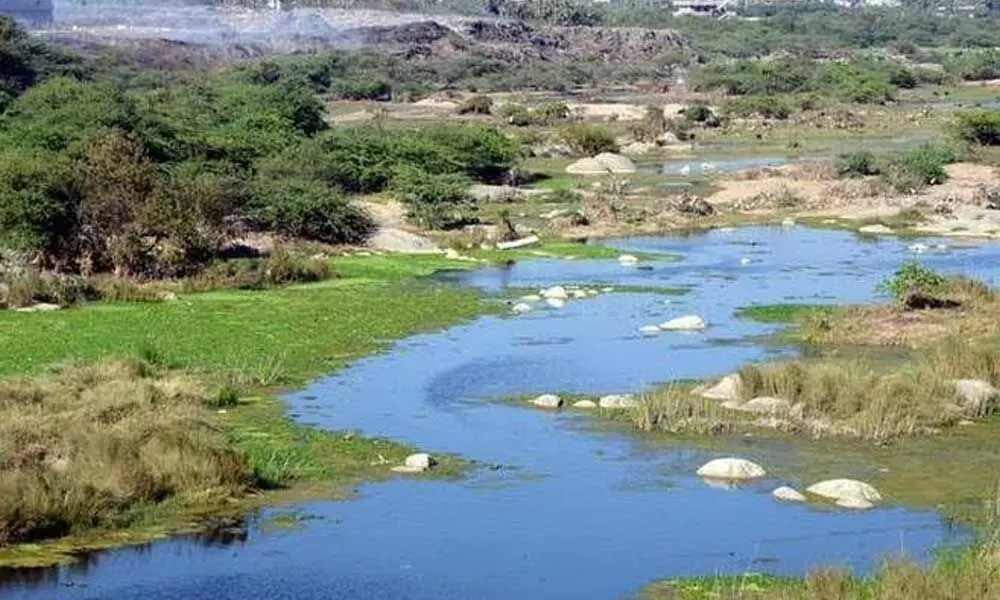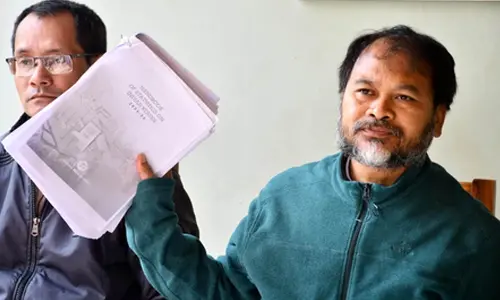Desilt water bodies to rejuvenate storage capacity in tanks: Farmers

Photo for representational purpose
- All the channels associated with the irrigation system remained choked with tonnes of silt, debris and thorny trees and encroached upon by land sharks
- The district mainly depends on tank irrigation has about 6,000 water bodies and 1,180 tanks
Anantapur: Farmers are urging the district administration to rejuvenate tank irrigation into a functional and efficient system by desilting tanks and water bodies and boost their rainwater storage capacity.
All the channels associated with this irrigation system remained choked with tonnes of silt, debris and thorny trees and the channels had been encroached upon by individuals, societies and temples at various places, immediate steps have to be taken to remove all the obstacles. Tanks in the district remained largely dry for over 20 years due to encroachment of clogged irrigation channels.
Anantapur district lacking in major rivers, is entirely dependent on streams, tanks and wells for irrigation. Indeed, these three water resources from an integrated system streams feed tanks which in turn recharge wells. Farmers in the district are aware of these connections and traditionally had made adequate arrangements for their maintenance and operation. Restoration and renovation of tanks should be given paramount importance. The district has about 6,000 waterbodies and 1,180 tanks and is of the tank intensive districts in the state of AP.
Manmade reservoirs, popularly known as tanks, have formed the backbone of agriculture in the dry regions of our country, especially in south India. These regions not only receive relatively small amounts of rainfall but also suffer from a high degree of annual and seasonal fluctuations. Tanks have been an ingenious way of utilising rainwater. While rainfed cultivation goes on during the monsoon, the tanks store water during this period for later use.
Tanks are also crucial for recharging groundwater in these regions since streams and rivers remains dry for most part of the year. Agriculture would have been well high impossible in these regions without these tanks. That these dry regions grow a great variety of crops and support dense populations is a testimony, among other things, so the effectiveness of this traditional technology of water conservation. Anantapur district tanks hold water only for 3 to 4 months due to poor maintenance of tanks. Anantapur district borewells are necessary feature of cultivation and the role of tanks in recharging groundwater is even more important than their role in surface irrigation. Tanks have to be strengthened and breaches have to be identified and proper treatment has to be done.
Sluice gates and supply channels are in bad shape.
Anantha Jala Sadhana Samithi convener P Naveen Kumar told The Hans India that every year more than 2,200 cusecs of water were received through the HLC from the entry point at AP, against a possible 4,000 cusecs, the canal could breach at many places. The structures at Mopidi need immediate repair and the sluice gates of the Kannekal tank inlet and outlet are in such a bad shape that they cannot be operated, and water flow cannot be regulated there. Most of the minor tanks in the district are in bad shape.
Realising the seriousness of the problem confronting waterbodies, farmers are also demanding the district administration to take up repairs, renovation and restoration of waterbodies. With the objectives of comprehensive improvement and restoration of traditional waterbodies, which includes increasing tank storage capacity, groundwater recharge, increased availability of drinking water, improvement of catchment areas of tank commands etc.














